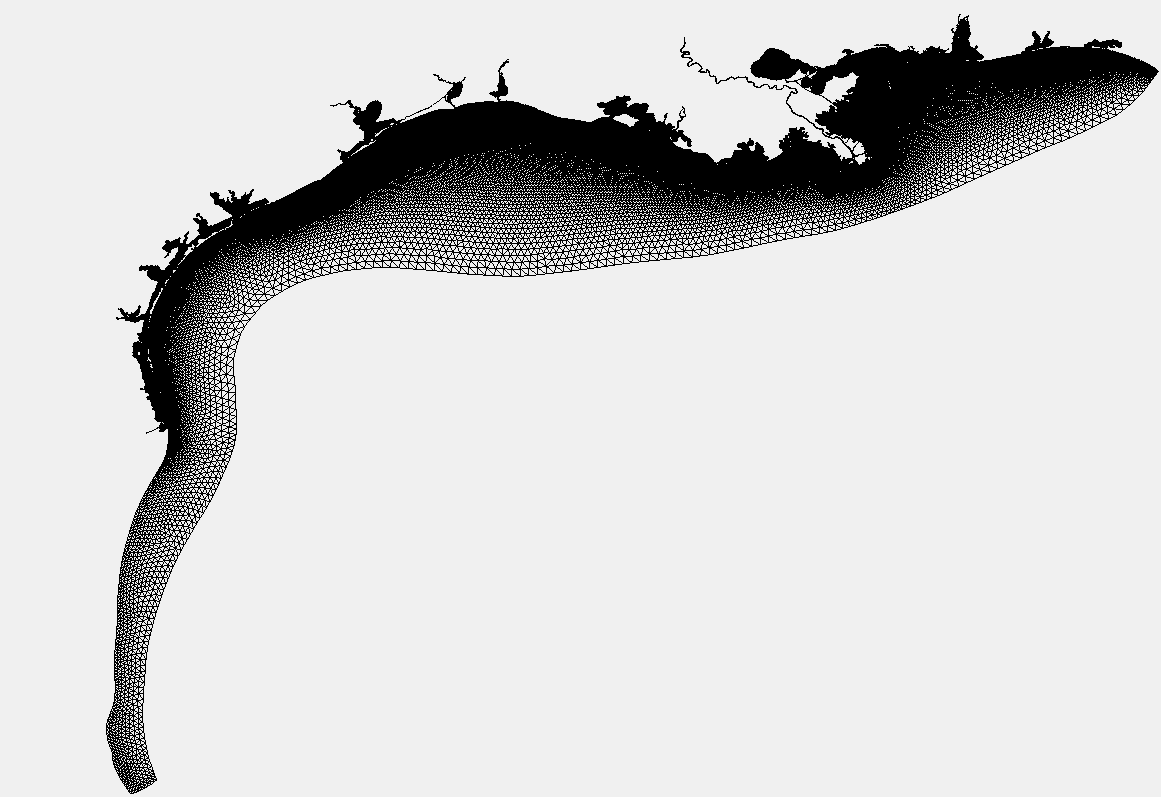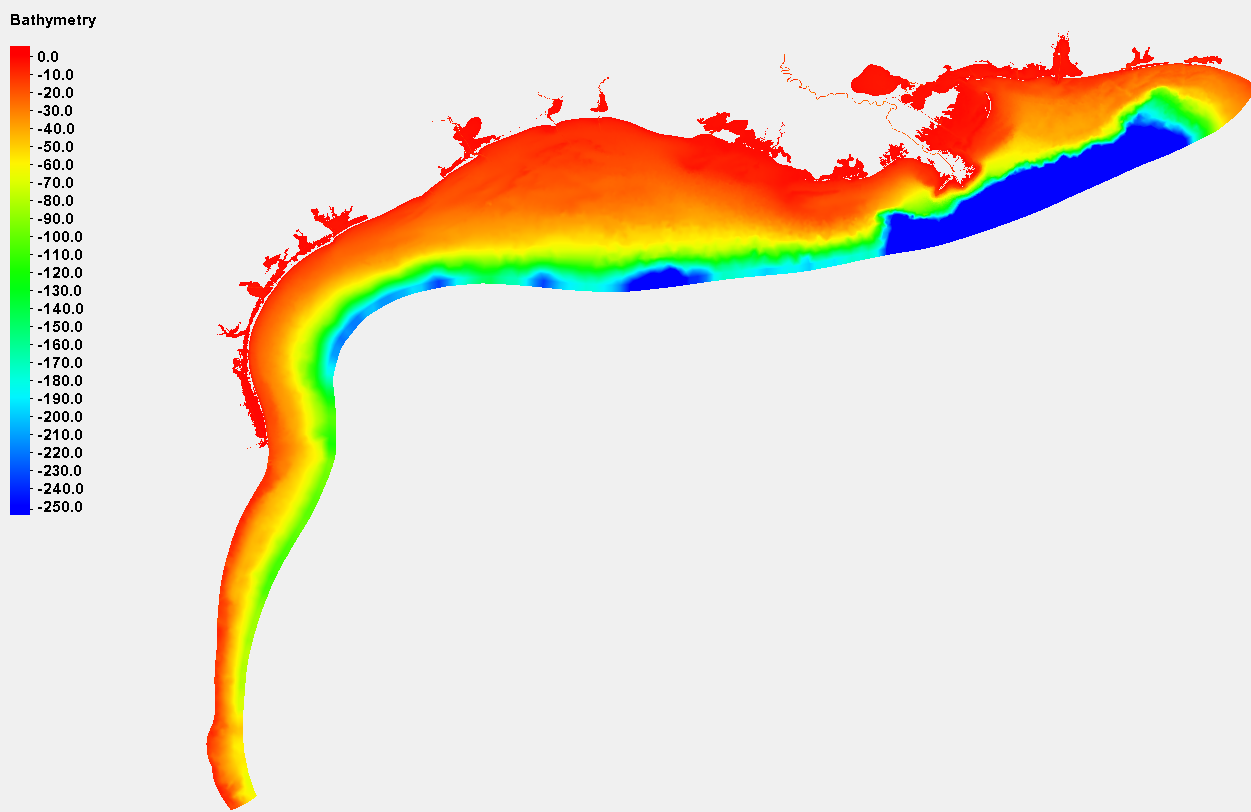The Northern Gulf of America Operational Forecast System (NGOFS2)
Oceanographic nowcasts and forecast guidance are scientific predictions about the present and future states of a water body (generally including water levels, currents, water temperature and salinity). These predictions rely on either observed data or forecasts from large-scale numerical models. A nowcast incorporates recent (and often near real-time) observed meteorological, oceanographic, and/or river flow rate data and/or analyzed (e.g. gridded) meteorological and oceanographic products. A nowcast covers the period of time from the recent past (e.g., the past few days) to the present, and it can make predictions for locations where observational data are not available. Forecast guidance incorporates meteorological, oceanographic, and/or river flow rate forecasts and makes predictions about the future states of a water body. A forecast is usually initiated by the state of a nowcast.
The wind data used to run NGOFS2 are based on the National Weather Service (NWS) nested, 12 km resolution North American Mesoscale (NAM) weather prediction model winds (for the nowcast and forecast).
Additionally, NGOFS2 relies on CO-OPS' real-time water level, temperature and salinity observations, NWS Extratropical Storm Surge (ETSS) forecasts, the Advanced CIRCulation Model (ADCIRC) ec2001 tide database, U.S. Geological Survey (USGS) river data, and the Global Real-Time Ocean Forecast System (G-RTOFS).
The NGOFS2 grid, arching the open boundary between the coast near Panama City, Florida to the northeast and Veracruz, Mexico to the southwest, has 303,714 nodes and 569,405 elements. Grid resolution ranges from 10 km on the open ocean boundary to approximately 600 m near the coast, indicating the flexibility of the grid size based on bathymetry from the deep ocean to the coast. Additionally, the higher resolution along the navigational channels within bays, the inlets connecting bays with their adjacent coast, the intracoastal waterways, and the narrow tidal creeks, from approximately 45 m to 300 m, well resolves the complicated coastline and geometry, and thus is able to provide the detailed current features. The NGOFS2 grid and spatial extent is indicated above. Note that the greatest resolution of the NGOFS2 grid corresponds with the major bays in the northern Gulf of America. The northern Gulf of America bathymetry is also shown above.
NGOFS2 runs on NOAA's High Performance Computers (HPC) in a new Coastal Ocean Modeling Framework (COMF) developed by CO-OPS. As a result, NGOFS2 has direct access to NWS operational meteorological products that it needs to run reliably. Nowcast and forecast guidance cycles are run 4 times a day (every 6 hours).
NGOFS2 output is in NetCDF format. An archive of NGOFS2 NetCDF nowcast and forecast files can be accessed from THREDDS server.
All CO-OPS official real-time products, including nowcast and forecast guidance from NGOFS2 are monitored by the CO-OPS's Continuous Operational Real-Time Monitoring System (CORMS). CORMS provides 24 hour per day, 7 day per week monitoring and quality control of sensors and data in order to ensure the availability, accuracy, and quality of tide, water level, current, and other marine environmental information. CORMS is intended to identify invalid and erroneous data and information before application of the data by real-time and near real-time users.

